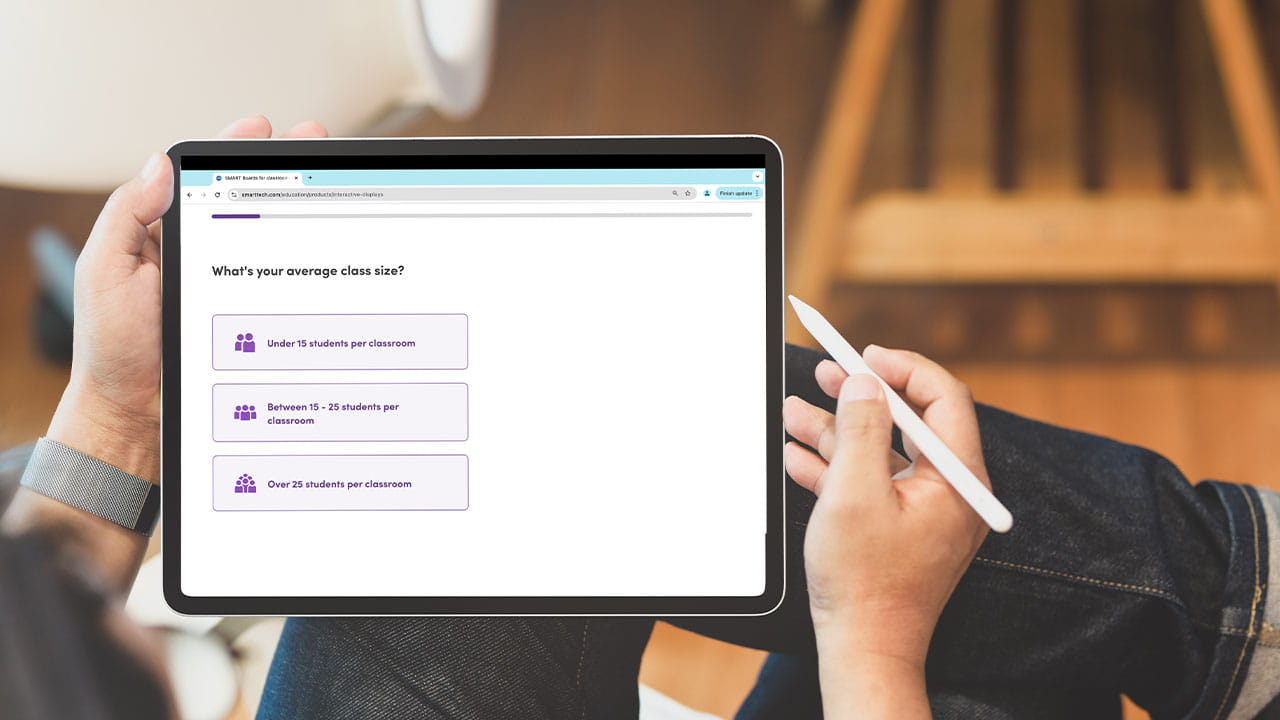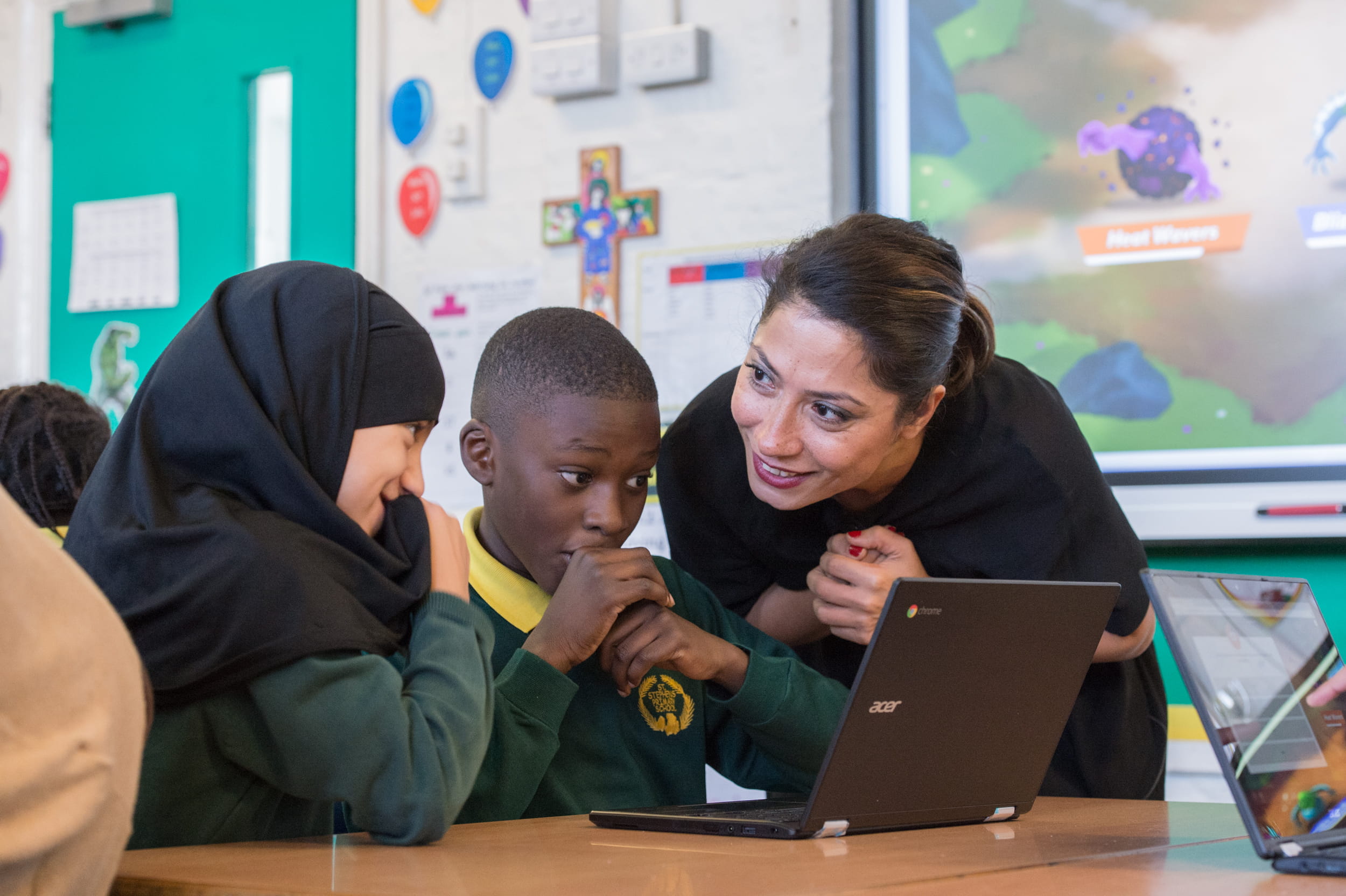Schools and districts are increasingly adopting the tenets of social-emotional learning (SEL) to help students thrive by becoming more adaptable to challenges and change. In this eight-part series, we examine how SEL can be incorporated in the classroom and how EdTech can help.
First, we take a holistic look at SEL. Then we dive into five SEL competencies: self-efficacy and self-awareness; social-emotional awareness; identity and emotional awareness; social awareness and collaboration; and critical thinking. We finish by exploring the importance of student mental health and, in this piece, how to create a culturally responsive classroom.
Bolstering student wellbeing is more critical than ever. Students are influenced by what goes on in their lives outside of school, and it can affect their performance in the classroom. Those experiences aren’t always positive. Whether as a result of personal issues, such as conflict at home, or broader problems stemming from violence in their communities and even global health crises, the challenges facing young people today are extensive — so much so, that leading children’s health care groups in the U.S. and Canada declared that student mental health concerns have reached crisis levels.
Educators can help to alleviate this situation by prioritizing social-emotional learning in the classroom. Culturally responsive teaching is one best practice that allows educators to acknowledge the value in students’ differing experiences and foster belonging to improve learning outcomes and help close learning gaps.
Here is what educators need to know about how this approach supports their student success goals.
What is culturally responsive teaching?
Many educators emphasize the “culture” part, mistakenly believing it entails celebrating each child’s racial and cultural background through festivals and food or by focusing on aspects of social justice. As Zaretta Hammond, author of “Culturally Responsive Teaching and the Brain: Promoting Authentic Engagement and Rigor Among Culturally and Linguistically Diverse Students,” said in an interview, “While those are really noble things and critical to a high-functioning classroom and school climate, it doesn’t have anything to do with learning capacity.”
That’s key: Culturally responsive teaching is designed to build each student’s learning capacity by bolstering the cognitive scaffolding they bring with them. It’s about teaching students to use their own knowledge and experiences to build connections — with their fellow students, teachers and the larger community.
Being aware of how their unique skills and perspectives benefit others can help students see themselves in the classroom and, as a result, see a path to success. Notably, this helps students build self-efficacy, a key component of social emotional learning. To enable that outcome, educators must show students that their knowledge and experiences are valued and that their contributions matter.
The intrinsic benefits of a culturally responsive classroom
Educators are increasingly focused on the relationship between neuroscience and learning. As one analysis in Pew’s Trend Magazine explained, “The way a teacher focuses a student’s attention can affect the nature of learning-induced changes in specific brain circuits.”
One powerful byproduct of a culturally responsive classroom is the connections forged among students as they teach one another. The flow of conversation through positive relational discussions releases oxytocin and dopamine. These hormones contribute to feelings of trust and bonding, and they can help strengthen learning and memory. When you feel relaxed and energized, it helps you make connections between existing ideas and new ones.
But as teachers know all too well, the opposite happens for students who don’t feel safe or as though they fit in the classroom. Those feelings can be the result of their contributions going unacknowledged and/or microaggressions from teachers and classmates. In those scenarios, the fight-or-flight response can kick in, flooding the brain and body with cortisol and adrenaline. That reaction diverts physical and mental energy as the student focuses on protecting themselves. Depending on their personality, those feelings could manifest in retreat (such as by putting their head on their desk or refusing to do the work). The situation could even escalate to the student leaving the room or becoming verbally or physically confrontational.
Making every student feel as if they belong reduces the potential for psychological trauma in the classroom and instead makes the classroom a place where all students can develop their creative confidence.
What does a culturally responsive classroom look like?
While the culturally responsive classroom can take many forms, here are four commonalities.
- It’s a community. The culturally responsive classroom emphasizes that everyone’s participation is critical for success and encourages students to realize the value they bring as individuals. By not always being the “expert,” educators can draw out the knowledge students bring to the classroom from their own life experience to share with others. It’s also important to collaboratively establish the learning environment and classroom protocols. Ask what students want to see in their community and have them create the structure together.
- It engages students in ways that reflect their cultures and values. Educators need to understand how students’ frames of reference and contribution styles may vary based on their races and ethnicities. For example, many cultures have a strong oral tradition, and incorporating it into learning affirms students’ values and lived experiences.
- It fosters cooperative and contextual learning. A culturally responsive classroom aims to strengthen students’ sense of identity by connecting their learning to their community. Students are naturally curious and learn best when they see a connection that’s relevant to their own lives. Classroom discussions should focus on how concepts trickle into their immediate world to emphasize that students are not learning in a vacuum. Students will be more engaged when they can make relevant connections and see themselves in the learning.
- It allows students to develop their own voice. Giving students space to think through ideas by iterating, asking questions and solving problems with the teacher and one another allows them to practice self-efficacy, a key principle of SEL. Enabling students to share their greatness underscores the idea that everyone can give something back to the classroom community. Instead of valuing individual contributions, note the importance of having the class succeed as a whole.
Best practices for engaging with students in a culturally responsive way
Creating a culturally responsive environment is foundational in helping students succeed, but sometimes educators inadvertently undermine this good work. Here are three best practices for engaging students:
- Think through potential pitfalls. Run class discussions through a lens of inclusivity. Avoid asking questions like “What did you do this summer?” or framing discussions around traditional family situations, which can exclude or even be retraumatizing to students. Instead, ask students what they learned over the summer, and be inclusive of the many shapes families can take.
- Address microaggressions. Don’t ignore these negative actions targeting marginalized groups. Understand how they can appear in the classroom setting and address them when they happen, even if they appear subtle or unintentional. Doing so will help the targeted students feel the sense of belonging they need to perform at their best in the classroom.
- Emphasize student voice and choice. Let students share their learning in the format of their choice, such as writing a story, song or poem; drawing a comic; or even making a short video. Allowing them to share their learning in a medium in which they are individually interested will inspire them and engage them in learning.
Culturally responsive learning will be a process
Remember that changes won’t happen overnight. They can be difficult and messy. But just like a home renovation yields clutter, dust and debris, the result is worth it. As you work to create a culturally responsive classroom, focus on the wins as you improve the process and move forward.
Ready to learn more about how to create a classroom environment that serves and supports all students? Check out our webinar highlighting key research strategies for culturally responsive teaching.


